Rufford Abbey Country Park Part 01 - Near The Abbey
w/e 30 November 2008

All this week's pictures were taken
with a Kodak DX6490
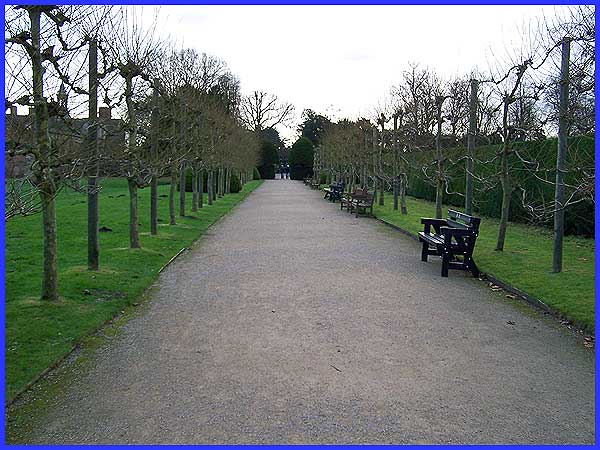
Rufford Abbey Country Park lies just south of Ollerton in Nottinghamshire
to the east of the main A614 road that marks its western boundary.
There are two large car parks and we parked in the one to the
left of this image at the southern end of the park. Visitors
to the Abbey from the Western Lodge entrance in days gone by
would no doubt have approached through the gates in the distance
and along Lime Tree Avenue.
|
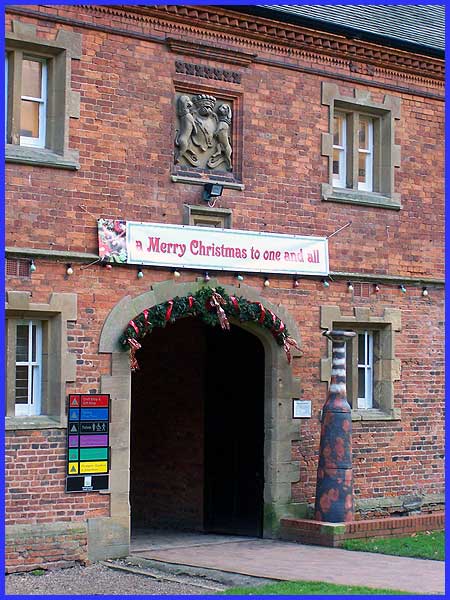
At the end of Lime Tree Avenue are the remains of the abbey and
this building which was the former stable block of the country
house that came after the abbey. It now houses the Craft Centre
and includes Britain's first Ceramics Centre and a Gallery where
exhibitions are staged. The decoration above the arch and the
banner are purely temporary additions during this festive season.
|
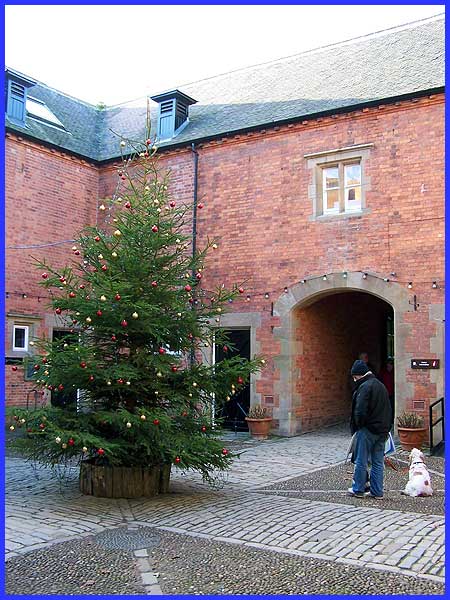
Passing through the arch leads to a small courtyard again attractively
decorated in festive style where access can be gained not only
to the Craft Centre but also a Visitor Information Centre plus
a Gift Shop where a wide range of souvenirs may be purchased.
|
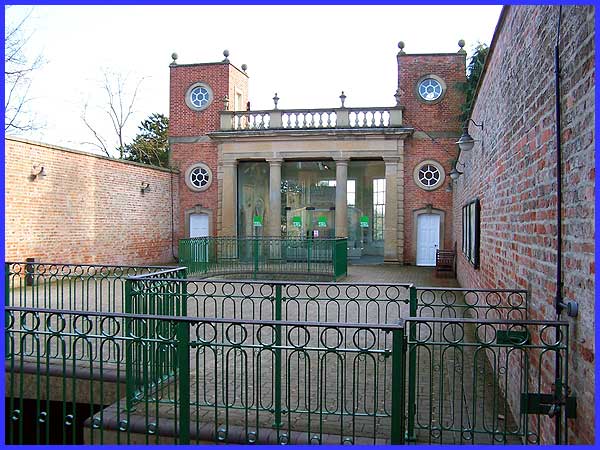
Beyond the courtyard is the Coach House Cafe - we can vouch for
the coffee - and a little further on is the Bath House and Orangery.
The Bath House had an open pool down the centre of the building
with steps leading into the water at the foreground of this image.
When it was converted to the Orangery, the pool was covered over
with decorative tiles but it has now been sympathetically restored
to preserve the history and major features of the building. The
1995 restoration allowed for the creation of the Apsidal Gallery
at the far end which feature a changing display of outdoor sculptures
and large scale ceramics.

A series of information boards detail the history from its origins
as a Bath House in 1730 with an open pool, through a glass-roofed
Orangery in 1889 to its current appearance since 1995.
|
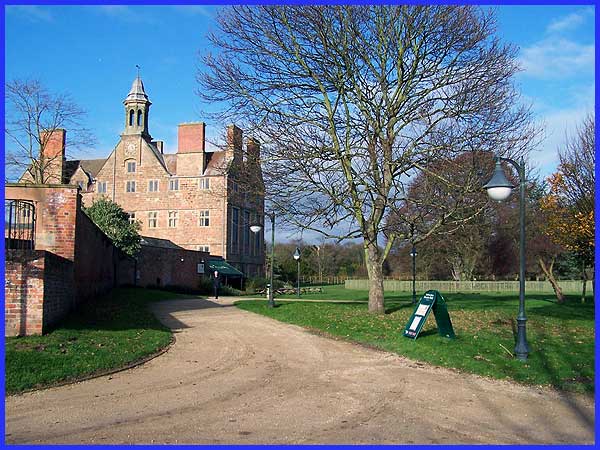
Although still referred to as Rufford Abbey, the days of the
abbey are long since gone being another victim of Henry VIII
in 1534. The land containing a "rugforde" or rough
ford had been gifted to Cistercian monks by a relative of William
the Conqueror in 1146 but after the Dissolution, it was granted
in 1537 to the Talbots, one of the richest families in Tudor
England. Alterations were undertaken to part of the abbey and
by 1590 it had become a house and hunting lodge and in 1626,
it passed through marriage to the Savile family from Yorkshire.
The name of the family is perpetuated in the Savile Restaurant
which is just visible here in the shadow of the wall on the left
as we left the Orangery.
|
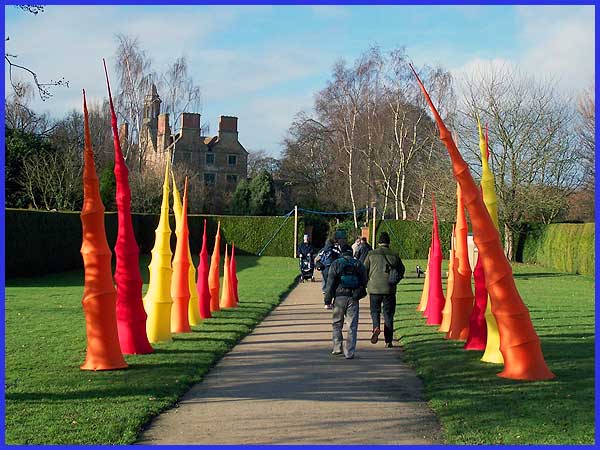
Turning away from the abbey though we entered an area of formal
gardens that include a Sculpture Garden, a Children's Garden
and a Maze. At the moment and until mid-December the gardens
are hosting "Aurora - a stunning garden lighting display"and
the gardens will be open in the evenings when the displays will
be seen to their best effect. Even in bright sunshine though,
this display was quite striking.
|
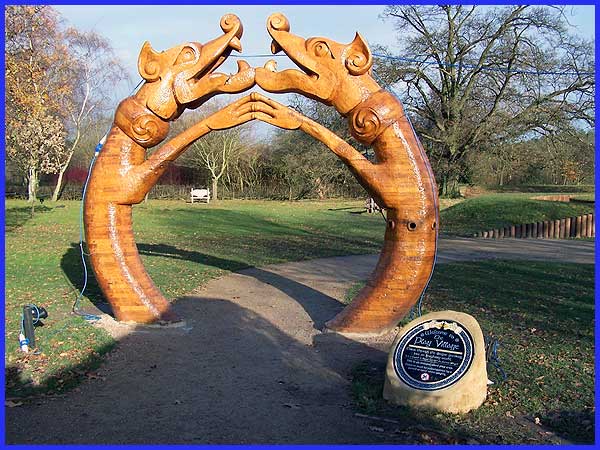
Another striking feature nearby is the entrance to the "Play
Village" where you are invited to enter through the dragon
gateway into an imaginary world.
|
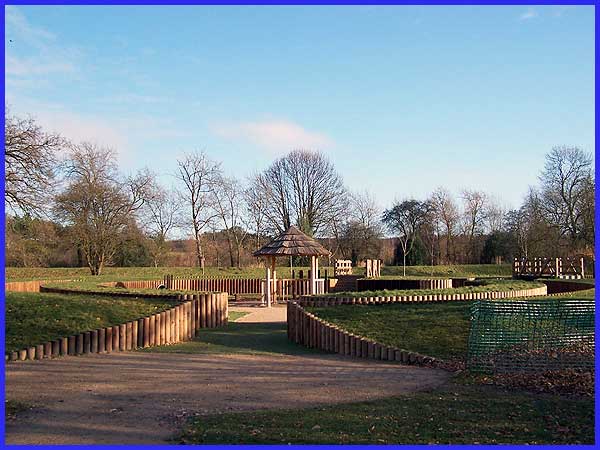
The sign at the entrance also asks "Is it a Castle? A Secret
Hideout? An Ancient Village?" We decided we were a little
too old to enter the village so passed by and headed for the
Lakeside Walk. From here we would pass the Long Meadow and Rufford
Lake to the ford at Rufford Mill and then return to the abbey
via Broad Ride which is the route we will follow in Part 2.
Forward to Part 02
|










